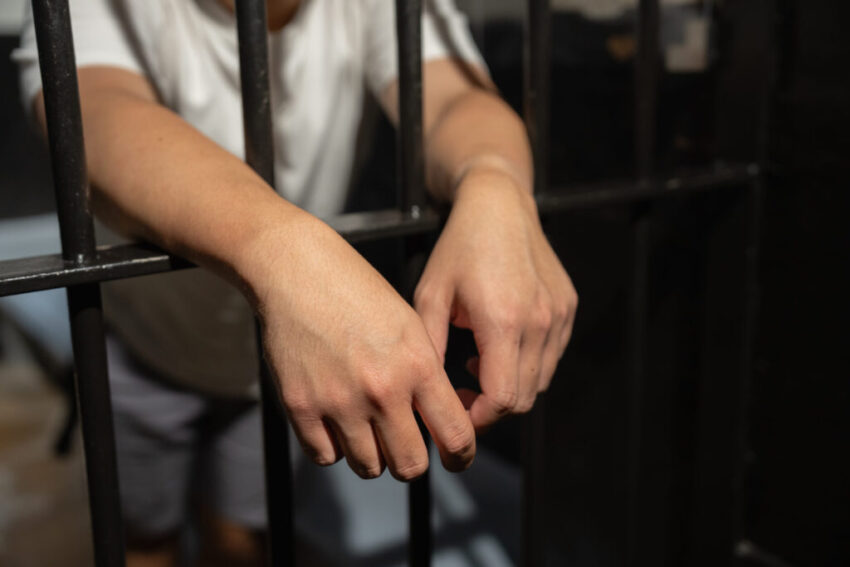(Photo by Jack Yen Joy Photography/Getty Images)
I spent 43 years in the Nevada prison system, including 22+ years in solitary confinement. I went in at 18 on a relatively minor charge with an expected release in two years. Instead, I emerged at 62 years of age.
Over all those decades, I dreamed of freedom but when my moment finally came, the challenge to stay free was nothing I ever could have imagined. I was homeless for close to a year, shivering on park benches on frigid nights, not allowing myself to lay down for fear of attracting the attention of police. And when I finally came up on a waitlist for public housing, I was so happy, but I was denied based on my history. I sobbed when I read the letter, and figured it was hopeless.
I watched guys I’d known on the inside also trying to make it, usually giving in to selling drugs just so they could eat, with most getting caught and going back in. Society would say they hadn’t learned their lesson, but is that what’s really going on here?
In my case, through the grace of God, I came to the attention of some good people, who guided me, and supported me. I still have a long way to go, but I’ve been luckier than most.
Survival after prison shouldn’t be a matter of luck.
Most people come out with high hopes of making it on the outside, but the obstacles they face are almost insurmountable. When someone leaves prison, they are handed a bus ticket, a few dollars, and a near impossible task: rebuild a life with a felony stamped across their name. They’re told to “start over,” but society ensures they can’t. Employers shut doors, housing applications are denied, and even programs meant to help them reintegrate are overwhelmed, underfunded or non-existent.
For thousands of formerly incarcerated people, freedom is just another trap – one that pushes them back into the cycle of poverty and the crime we claim to abhor. If we truly want to reduce recidivism, we must confront the systemic discrimination that sabotages second chances.
Various programs offered inside prisons claim to “rehabilitate” but what value does it have if it all ends at the prison gates? Take the man who serves 10 years for a non-violent drug offense. Inside, he earns his GED, learns carpentry and vows to stay clean. Upon release, he applies to 20 jobs. One of them calls him back. But after a background check the answer is: “We don’t hire felons.” That man isn’t alone. 60% of formerly incarcerated individuals remain unemployed a year after release. Without income, housing or hope, many return to “survival crimes.” Is this failure theirs – or ours?
The stigma of a felony is a life sentence. Even in states with “Ban the Box” laws that prohibit initial questions about criminal backgrounds on job applications, employers will often reject the applicant post-background check. Licensing boards may deny people with records from trades like barbering or plumbing — skills that many learn in prison. Food stamps and housing vouchers are frequently withheld for those with drug convictions. Meanwhile, reentry programs – job training, counseling, addiction support — are plagued by waitlists. In some cities, waiting periods for housing exceed six months, leaving many to sleep on the streets, an invitation to arrest if they are sleeping in a public space, which is all but inevitable if you are homeless.
When society denies people the tools to rebuild, recidivism becomes a self-fulfilling prophecy.
According to Bureau of Justice statistics, nearly 44% of released prisoners are reincarcerated within their first year out. But this isn’t only about “personal failure.” Studies show that stable employment reduces recidivism yet many employers refuse to hire the formerly incarcerated. They are often denied education — colleges frequently reject applicants with records. Even federal student aid packages carry restrictions for those with a record. Despite having paid their dues, for the formerly incarcerated, every door leading to admittance back into society is invariably slammed in their face. And then we act surprised when they struggle.
Change isn’t hypothetical. Nonprofits like The Last Mile — train, educate and connect the incarcerated with outside companies. The recidivism rate for those who go through their program is less than 5%. Countries like Norway, with their focus on rehabilitation, also have dramatically lower recidivism rates.
Most of the formerly incarcerated people I’ve encountered want to be productive members of society. They just need help getting there. Here’s how we start:
1) Invest in reentry programs: fund job training, mental health services, and housing subsidies specifically for the formerly incarcerated.
2) Incentivize employers: offer tax breaks to companies that hire people with records.
3) Reform licensing laws and eliminate blanket bans on occupational licenses.
4) Expunge records: automatically clear old convictions after a crime-free period.
5) Humanize, don’t stigmatize: share stories of successful reentry to combat stereotypes.
Punishment shouldn’t last forever. Every person released from prison faces a choice: reintegrate or recidivate. By denying the formerly incarcerated the housing, jobs, and dignity they need to succeed, we make that choice for them. If we want safer communities, we must stop treating the formerly incarcerated as perpetual criminals — they served their time. When do we start serving real justice?
Click this link for the original source of this article.
Author: Frank De Palma
This content is courtesy of, and owned and copyrighted by, https://www.nevadacurrent.com and its author. This content is made available by use of the public RSS feed offered by the host site and is used for educational purposes only. If you are the author or represent the host site and would like this content removed now and in the future, please contact USSANews.com using the email address in the Contact page found in the website menu.








